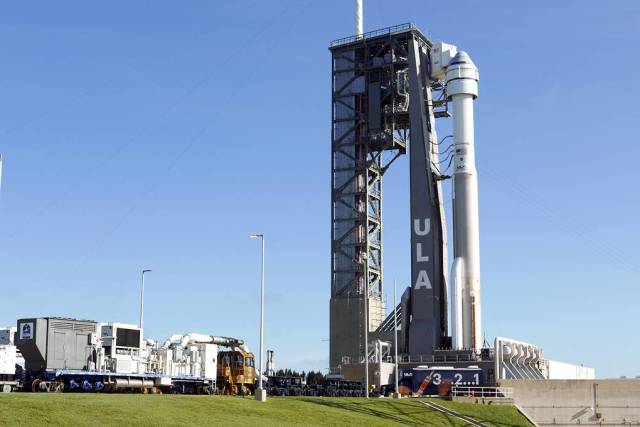Washington. May 3. INTERFAX - The promising spacecraft CST-100 Starliner is ready for the second test flight (Orbital Flight Test-2 - OFT-2) in unmanned mode to the International Space Station (ISS), scheduled for May 19, director of the program for its development of Boeing Corporation Mark Nappi said on Tuesday during a NASA teleconference.
The launch of the CST-100 Starliner using the Atlas V heavy launch vehicle is planned to be carried out from the 41st launch complex at the Cape Canaveral cosmodrome in Florida as part of the NASA commercial program. 24 hours after the launch, the ship should dock with the station. It will deliver more than 225 kg of materials to the ISS to supply the ISS.
The launch of the second OFT-2 test mission to the ISS was planned to be carried out in August last year, but due to technical problems, it was canceled three hours before the launch. Problems were identified in the operation of 13 valves of the low-thrust engines of the Starliner service module.
Boeing is developing a manned spacecraft CST-100 Starliner under a contract with NASA. Like SpaceX, it was chosen by the American Space Agency as a developer of new systems for delivering American astronauts to the ISS. SpaceX has already completed four such regular missions with the help of its Crew Dragon ships. The last launch was carried out at the end of April. Meanwhile, Boeing is still at the stage of testing its ship in unmanned mode.
During the second unpiloted mission, the Starliner ship should dock with the ISS, in which it will stay from 5 to 10 days, after which it will return back to Earth.
On December 20, 2019, as part of the first test flight without a crew, due to software problems, the Starliner deviated from the route, entered an abnormal orbit, overspent fuel and could not dock to the ISS. It returned to Earth two days after launch. Nevertheless, he made a successful soft landing at the White Sands proving ground in New Mexico. This was the first landing of the American descent system on land. All previous American vehicles were brought to the ocean.
Since the first test flight, Boeing and NASA have made about 80 other corrective changes to the ship's systems before the second test test. If the second flight is successful, NASA can certify the Starliner for the first test flight with astronauts on board.
Under the contract with NASA, Boeing Corporation received more than $ 5 billion for the development, production of the Starliner spacecraft, as well as the implementation of its missions to deliver astronauts to the ISS and return them to Earth. It is designed for a crew of up to seven people.

